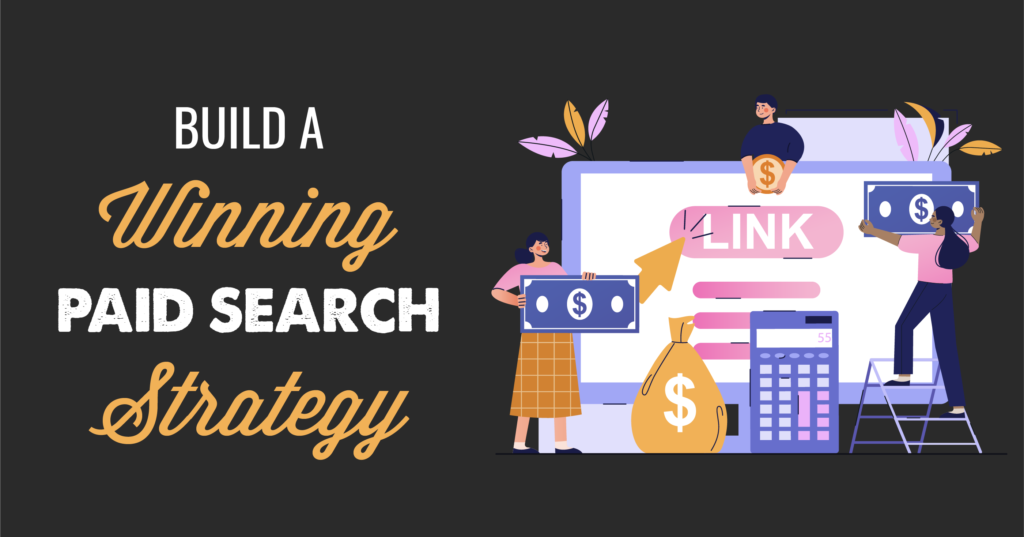

You log in to Google Ads and see that your cost per click has jumped…again. Why is Google Ads getting so expensive?, you’re thinking.
One word: competition. More local contractors are entering the digital marketing space. They’re transitioning away from old-school traditional marketing tactics to grow their business, and they’re investing in pay-per-click (PPC) ads to spread the word and book more appointments. We hate to break it to you, but Google Ads is only going to keep getting more expensive.
So, what should you do? Is it time to ditch Google Ads and focus your efforts on search engine optimization? Should you keep your bids low and hope for the best? Well, not exactly.
Google Ads can ignite your traffic and conversions, but you’ll need the right strategy to stretch your ad spend. Here’s everything you need to know to make the most of your Google Ads campaign.
Even if you’re doing everything right, you still might find your cost per click (CPC) skyrocketing. Maybe small tweaks helped you keep costs down in the past, but they’re not always enough to overcome major shifts.
After all, the pandemic marked a fundamental shift in digital marketing. With lockdowns in place, more consumers moved their lives online—and marketers followed. There’s no denying that digital marketing is now the advertising channel with the lowest risk and highest return.
The move to digital marketing doesn’t show any signs of slowing down, which means CPC costs will keep going up. Some factors that influence CPC include:
How much should you allocate to advertising? It’s a reasonable question, and one we hear all the time, especially from clients new to paid search. Before you jump into search engine marketing, you want to know whether you can afford it.
The good news? You probably can afford it, even if you’re working with a limited marketing budget. The bad news? There’s no magic formula to calculate your ad spend. Your bidding strategy will depend on a few factors, including your long-term goals, return on investment, and monthly gross revenue.
No matter what your ad budget looks like, you have the option to set an average daily budget or shared budget for a campaign. Your average daily budget is the average amount you’re willing to spend per day. If you’re just starting out, Google recommends an average daily budget between $10 and $50.
Even with increasing CPC prices, you need to make sure that your business wins Google’s top spot. According to WebFX Google Ad statistics, 46 percent of all clicks go to the top three spots—and people who click on ads are 50 percent more likely to make a purchase.
Fortunately, it’s possible to boost your rank without bumping up your rate. Here’s how to win at PPC without pinching pennies.
Highly competitive keywords drive traffic, but they come with a hefty price tag. Your goal is to strike the right balance between CPC and average monthly searches so you can drive traffic without breaking the bank. To start, use Google’s Keyword Planner to check the monthly search volume and CPC for individual keywords.
If you’re trying to lower your CPC, find long-tail keywords using Google’s autocomplete feature. Long-tail keywords are more specific than short-tail keywords, which translates to quality leads with clear search intent. For example, instead of targeting the term landscaper, try targeting residential landscapers in Denver.
When you’re building a campaign, Google assigns a quality score to each keyword. Google considers quality scores to calculate your CPC so the platform can serve relevant ads to searchers.
Google uses a few factors to determine your quality score: your click-through rate, landing page, and the relevance of your ad to the keyword. In other words, if you want to boost your score, it’s time to start working on these areas.
Quality score can be your secret weapon to outpace the competition. Why? Most people think that they can outbid and outrank the competition. But overbidding isn’t going to boost your ROI. In fact, it’ll only hurt you in the long run.
If you have a lot of keywords with low quality scores and high CPCs, try replacing them with low CPC keywords that have higher quality scores. Make sure your ad directly relates to the keywords and includes those keywords throughout the copy. To top it all off, create an irresistible landing page that primes your visitors for conversion.
High-quality content was the backbone of our paid search campaign for Warren Roofing®, a commercial roofing contractor in Cleveland. To run an effective PPC campaign, you have to build a foundation of optimized content and landing pages that position your business as the local authority and resource in your industry.
You don’t want to pay for dead-end clicks that aren’t going to convert. When you’re using Google Ads, negative keywords can help you save money by minimizing clicks from unqualified leads and irrelevant searches.
How? It’s simple: Negative keywords tell Google to hide your ads for specific terms. For example, if you’re targeting pressure washing in Denver, you don’t want to serve ads to users searching pressure washing marketing in Denver.
To find negative keywords, check your analytics to review terms leading to clicks. If you notice terms that aren’t relevant to your business, add them to your list of negative keywords.
One of the best ways to cut your ad spend? Actively manage your bidding strategy. Don’t worry, it’s easier than it sounds—and you don’t have to pour hours into Google Ads to master the art of bidding.
First, raise your bids on high-performing keywords. And remember: Keywords with high click-through rates (CTRs) and quality scores should always get priority.
Next, lower your bids on low-performing keywords. If certain terms have low quality scores, low CTRs, or high CTRs but low conversion rates, rethink your bids.
Finally, lower your bids during low-traffic hours. Check your analytics to identify which keywords lead to conversions throughout the day. For example, if you’re getting more phone calls between 1 p.m. and 3 p.m., try increasing your bids during those hours. After 3 p.m., lower your bids for the rest of the day.
Google Ads might feel intimidating due to its high cost and competition, but it doesn’t have to be. With the right strategy at your fingertips, you’ll ignite your contractor marketing plan with clicks and conversions from qualified leads.
A winning strategy can maximize your return on investment, but ineffective campaigns can do more harm than good. At Company 119, we’ve helped countless contractors turn paid search into a profitable strategy.
When you’re ready to say goodbye to wasted ad spend, reach out to our team. We’re here to answer your questions, brainstorm your PPC strategy, and give your business a competitive edge.